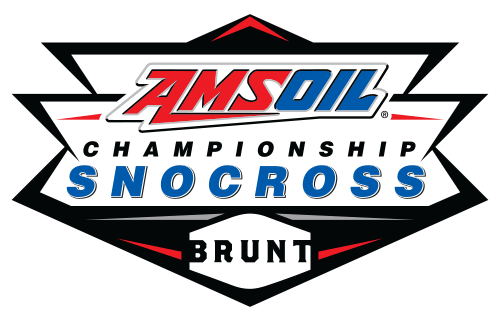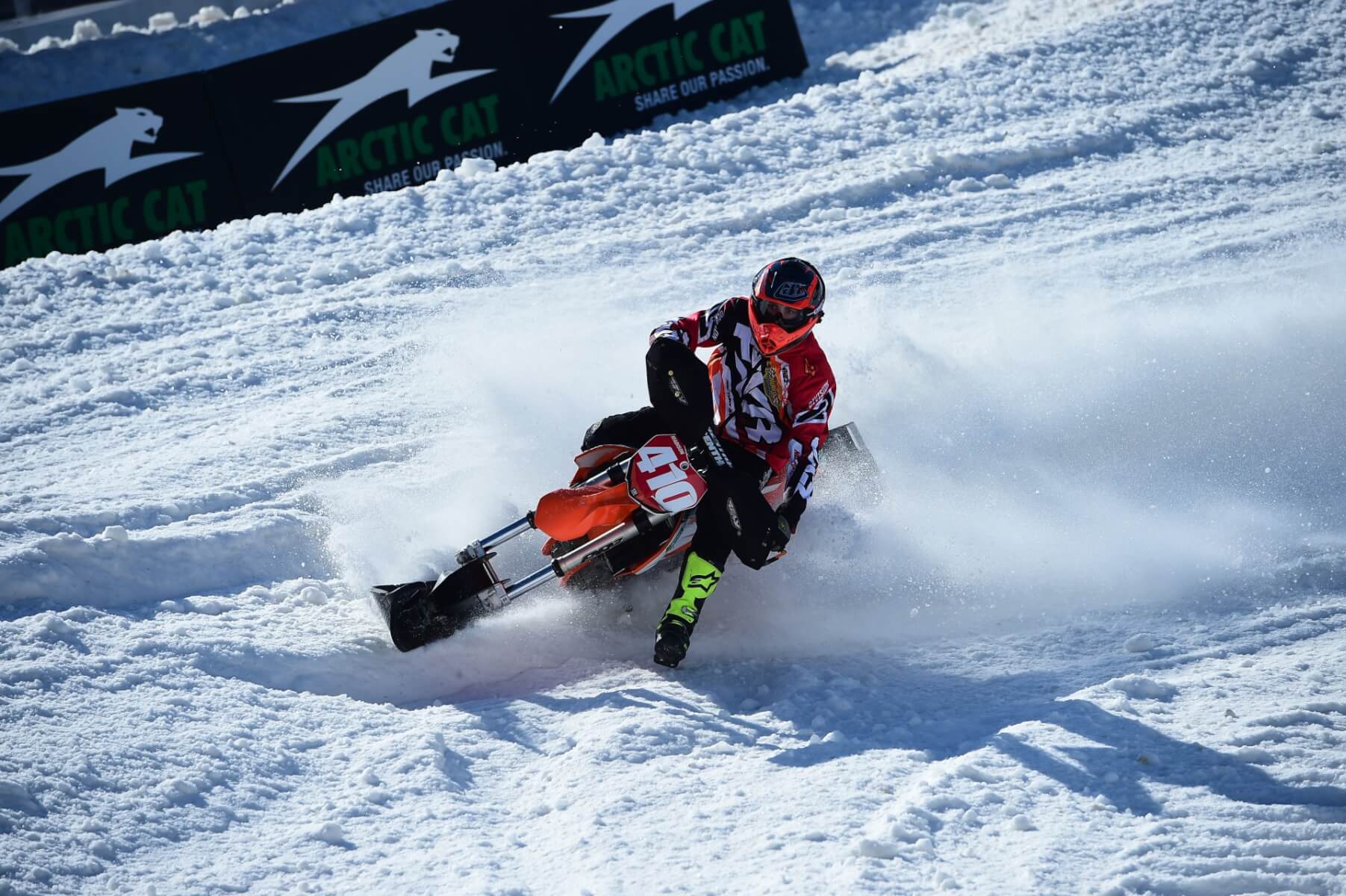Snow Bike Ambassador: Austen Madison
Long time Snocross and motocross athlete, Austen Madison, is one of the ambassadors helping to promote the new, growing snow bike class at AMSOIL Championship Snocross. Austen is the reigning snow bike class champion and is hoping to be on top of the podium again this winter. Austen was also a long time snowmobile rider, we wanted to find out the key differences between Snocross and Snow Bikes so we reached out to the champ. The Jefferson, WI native is excited for the 2018 season because the best is yet to come!
Austen tell us about yourself.
I’m 22 Years old; I live in Jefferson, WI. In the off season I spend a lot of time training and competing on the motocross track, riding mountain bike trails, or ripping up and down the river on my stand up Jet Ski. On the daily grind I’m an engineering technician for Generac power systems. If I’m not at the track or training, you can find me in my shop working on the bikes, fabricating on some project, or jamming out on my guitar.
Last season you earned the snow bike championship on the national tour, for the fans who aren’t familiar with snow bikes, give them a rundown on the machine and what it takes to turn a dirt bike into a snow bike.
Let’s start out with what a snow bike is. The number one snow kit on the market is a Timbersled System and this package includes a front ski and a rear track system that replaces the tires on a wide range of modern motocross and off-road dirt bikes from the early 90’s to today’s current models. A snow bike conversion may seem like quite a daunting task, but the engineers at Polaris / Timbersled have really streamlined and simplified the process with the new ARO snow bike kit with features like the pre-bled brake system. The ARO platform is built around a true bolt-on design that makes it the easiest to install and convert without any modifications to the bike. Installation can easily be completed in less than three hours and then you’re ready to ride.
When it comes to the performance side of things and getting the bike ready for the race track is another story. This is where we spend a lot of time in the shop and at the practice tracks making tweaks and changes. With snow bike Snocross being a brand new sport there isn’t a book out there on how to build the perfect Snocross snow bike so we have been testing and tuning at every practice session making improvements every time we throw a leg over the bike. This involves making changes to the fuel injection mapping, testing modifications we’ve made to the suspension, and other trick parts.
With the snow bike class being a new addition to the national Snocross tour, where do you want to see the sport go in the coming years?
I am a huge ambassador of this sport! With my roots in Snocross racing and motocross racing, I always wanted to be able to put the two together and when I saw snow bikes hitting the scene I was absolutely stoked about what could come of it. There are so many motocross racers that put their dirt bikes away for the winter and I really want to see those people get involved.
What did it mean to your family, friends, and yourself to win the first ever snow bike championship?
Winning that championship meant so much to me. It felt like a culmination of everything in my racing career, all of the riding, practicing, hard work, dedication, and time was the thought that went into it in that moment. I really poured my heart into this one and it all payed off in the end. There was a lot of enthusiasm from my friends, family and sponsors and it was a really cool moment for me and for everyone who made this possible.
What decisions lead you to race a snow bike with AMSOIL Championship Snocross, over a more traditional snowmobile?
I’ve been racing Snocross with two skis since I was 12 years old and this was a chance to change it up. When I attended Duluth for the first race of the season, I was actually just a spectator supporting my friends who were racing that weekend. When I saw the snow bikes hit the track I knew that I had to get one for myself and so I did just in time for the Colorado National.
During the off season what are you doing in your training program to make sure you are 100% ready for Duluth?
I make sure to stay physically active everyday whether that be going out for a run before work or making a loop through the mountain bike trails. I’m putting my time in at the gym working on my strength and fitness throughout the week as well.
You ride moto a lot during the snow bike off season, what can you take from riding dirt in the summer and use on the snow in the winter?
I do spend a lot of time on the dirt bike in the summer, but snow bikes and dirt bikes are completely different animals when it comes to the handling characteristics. I do use it as a good training tool when working on physical endurance.
For people who have never had the opportunity to ride a snow bike, is it a hard transition from moto to a snow bike?
I would have to say it’s a really easy transition going from a dirt bike to a snow bike. Once you spend a little time on the snow bike and understand how it reacts to the rider input you can gain a lot of confidence in cornering because of the large surface area that the track and ski have on the snow; it just really seems to “stick” when you’re riding through the corners.
Talk about practice on the snow bike, is there opportunities anywhere for you to ride and practice before heading out to an ISOC race?
In the winter, I spend several days a week at my local practice facility built by Doug Gust. He’s got a really nice place for me to practice and it’s close enough that I can go after work. Otherwise, if it’s a weekend that I’m not going to a race I like to get up to ERX in Elk River, Minnesota and practice at their facility.
What was your favorite track last winter and why?
My favorite track was Canterbury Park in Shakopee. It had the most turns and some of the coolest jump features.
What are the difficulties of racing a snow bike on a track that is mainly built for a snowmobile?
Although the tracks are designed for snowmobiles, most of the features can still be raced on a snow bike. The biggest issue comes down to the delivered power to weight ratio where snowmobiles have the advantage. On long straightaways such as the Lake Geneva Hill, snowmobiles have the power to pull away, where snow bikes excel is in tight corner tracks.
With the success you had last season taking home the championship, what will you have to do this winter to earn your second championship?
Championships are won with consistency and that’s always my main focus is finishing races and staying healthy all season. I’m coming into this season much more prepared than last and I’m going to use my experience that I gained from last year to get the job done.
I’ve got to thank Rob Strauss at Rob’s Performance Motorsports for everything he’s done for me to make this happen. Hands down, he has been my biggest supporter through this venture. Also, a big thanks to the Buchman family for getting me out to all the races last season. Last, but not least, all of my friends and family that support me chasing my dream.
Make sure to follow me on Facebook and Instagram @a410madison and watch for more details about the upcoming season


